Building iconic travel trailers and motorized touring coaches is akin to assembling an incredibly complicated puzzle. Each piece is important to the final product – the shower, the cabinetry, the windows, and beds – but perhaps no piece is as important as the chassis. If the Airstream is a puzzle, then the chassis might best be compared to the border you try to fit together first. You try and find the straight edges, and maybe start with one of the corners. In our hand-made process, the chassis is that piece upon which everything else in the puzzle depends.
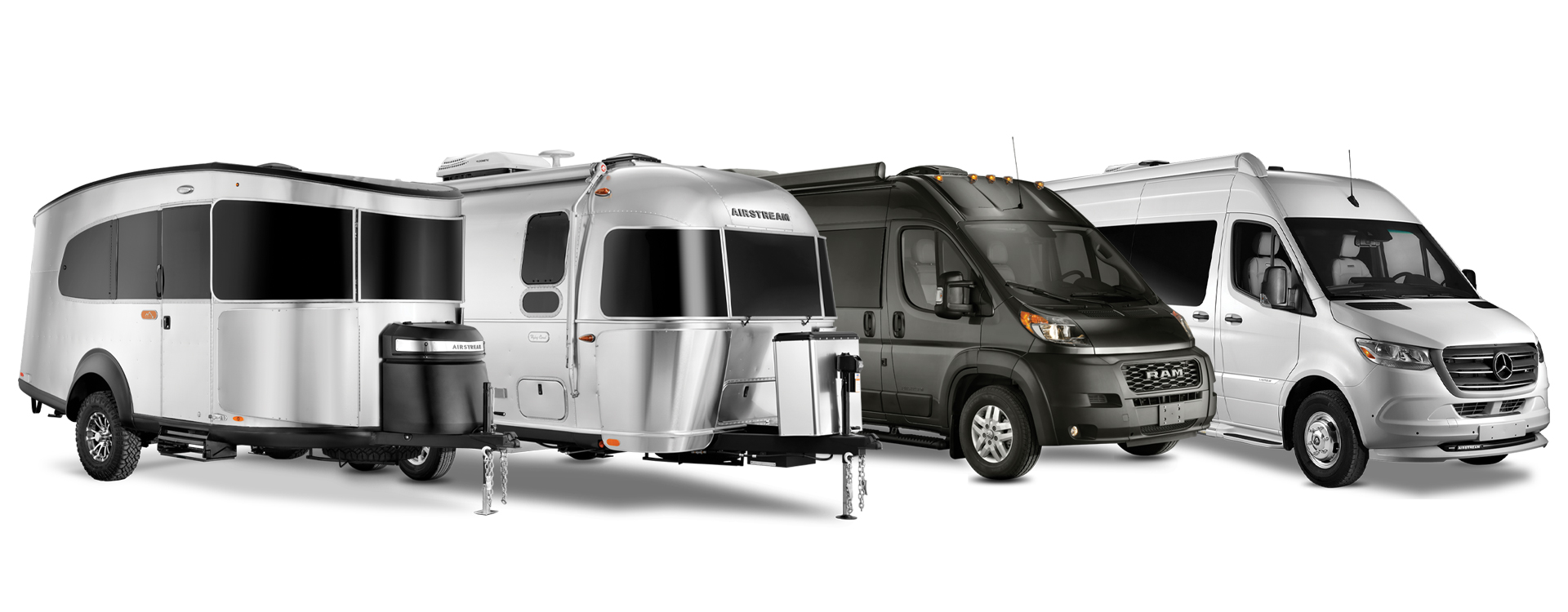
But what exactly is a chassis? For both Airstream travel trailers and motorized camper vans, the chassis is the mobile foundation upon which everything is built. It’s the first piece of the puzzle – and perhaps the most important piece when it comes to creating a dependable recreational vehicle that will stand the test of time.
What is a Chassis?
The word chassis originates in French, meaning frame. Today, the word is used in a variety of contexts related to that original meaning, but it’s most commonly used in reference to vehicles with wheels. In automotive terms – and in its recreational vehicle use – the chassis is the frame upon which everything is built. Under the typical automotive (or aeronautical) chassis are sets of axles and wheels that provide the chassis with its mobility, and upon the chassis the central components are affixed – the engine, the seats, the flooring and walls, and the structural framework that forms the car, truck, or airplane.
Comparing Travel Trailer and Touring Coach Chassis
The Airstream Travel Trailer Chassis
Our travel trailer chassis arrive at our Travel Trailer Production Facility in Jackson Center, Ohio as unadorned, painted black metal frames that are stacked for storage until they’re needed. Before any work is started, these chassis resemble large ladders, with two supporting beams running from the A-frame of the hitch at the front to back. Welded crossbars run between those beams, forming compartments into which components like holding tanks are installed.
One by one, the chassis are lifted by a forklift and wheeled into the production facility where they are mounted on a rotating apparatus so our production team has easy access to the undercarriage. The team begins work installing the axles, wheels, holding tanks, and initial plumbing. They run the initial gas lines, install the main entry doorstep, and attach stabilizer jacks and spare tires.
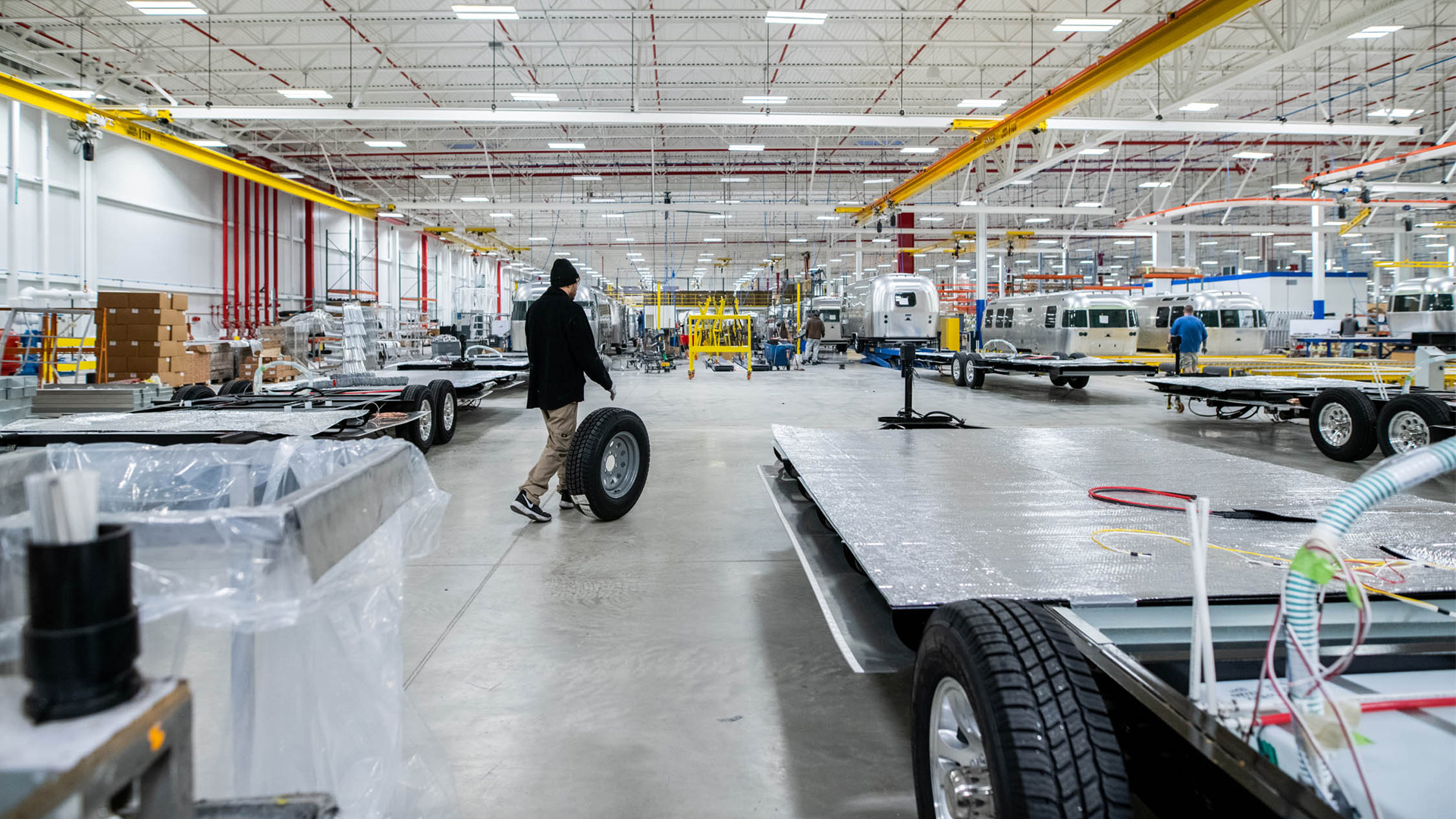
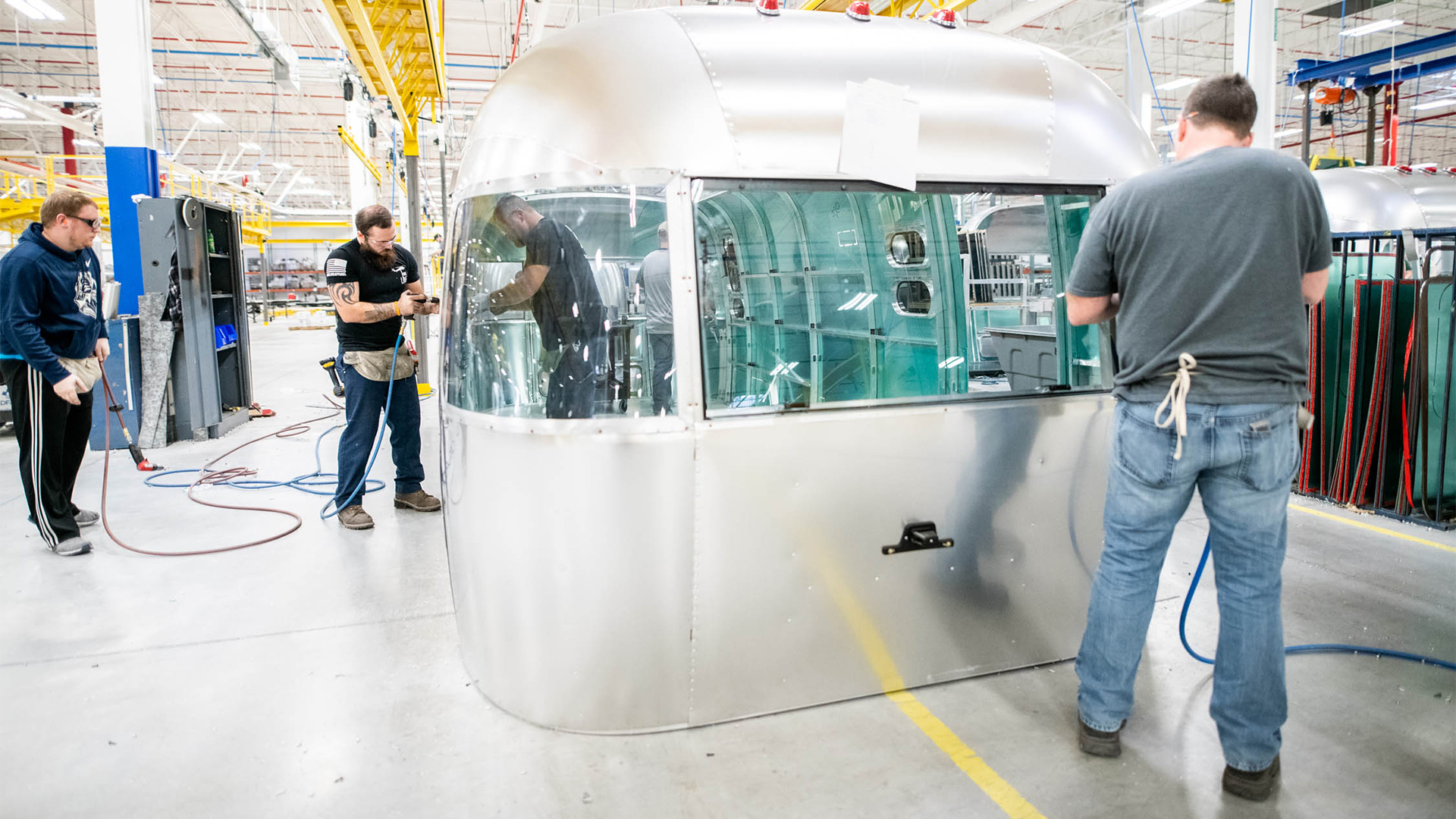
Nearby, a separate team begins work crafting the rounded end caps, walls, and roof of the travel trailer. Sheets of aluminum are stretched over rounded molds and riveted together, eventually resulting in five separate pieces coming together – two end caps, two walls, and a roof – on top of a pre-cut sheet of composite flooring. The walls and endcaps are affixed to the flooring and the rooftop is installed. Then, a hydraulic crane lifts the completed shell high above the production floor and moves it over to the main production line where it’s slowly lowered onto its waiting chassis.

As the shell is lowered onto the chassis, the team threads the plumbing lines and wires up through pre-cut holes in the composite flooring and begins to secure the shell to the metal frame. The aluminum sheets are wrapped around the edges of the chassis and black plastic guards complete the process. Once this work is complete, the Airstream travel trailer’s superstructure is complete – and ready for the next steps in this tried and true handmade process.
The Airstream Touring Coach Chassis
More than simply the frame upon which the RV is constructed, our motorized touring coach chassis arrive at our Touring Coach Production Facility as a fully-formed vehicle – at least from the exterior. Along with the frame, wheels, and axles, the majority of our touring coach chassis also includes the cockpit (pre-built with a dashboard, steering wheel, windows, and seats) as well as the walls, ceiling, doors, and floor. (The exception here is the Atlas Touring Coach, which comes to our factory as a “cutaway chassis” with just a frame, wheels, and cockpit – no walls or ceiling to the cabin portion, as those are hand built in our production process.)
For the Interstate and Atlas lines, we receive these integral parts from Mercedes-Benz®, while Rangline’s chassis come to us from RAM. Specifically, the Interstate line uses the Mercedes-Benz® Sprinter 3500 Extended for Interstate 24s and the Mercedes-Benz® Sprinter 2500 for Interstate 19. The Atlas is built upon the Mercedes-Benz® Sprinter 3500 Cab Chassis, and Rangeline uses the RAM ProMaster® 3500 High Roof Extended chassis.
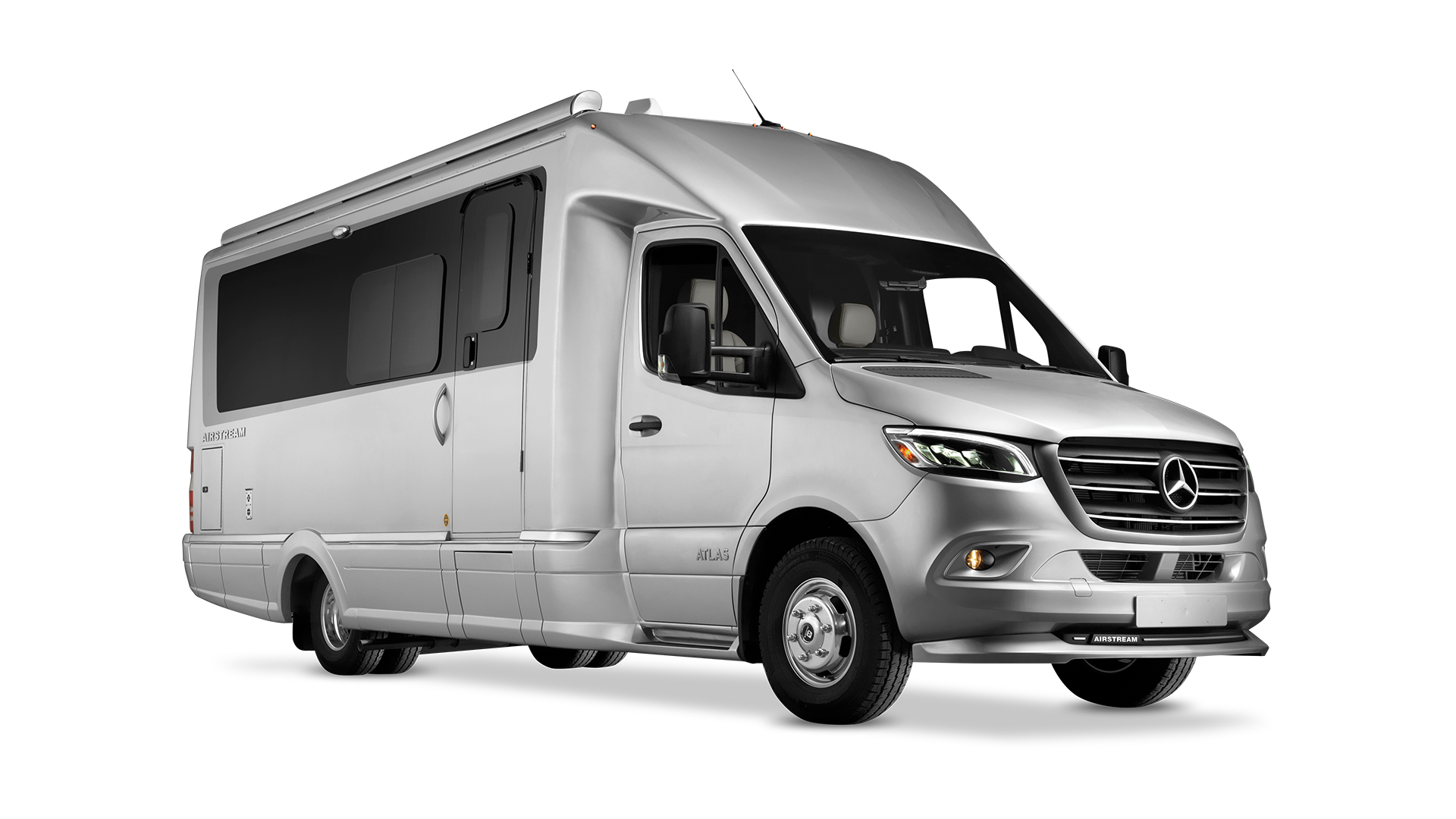
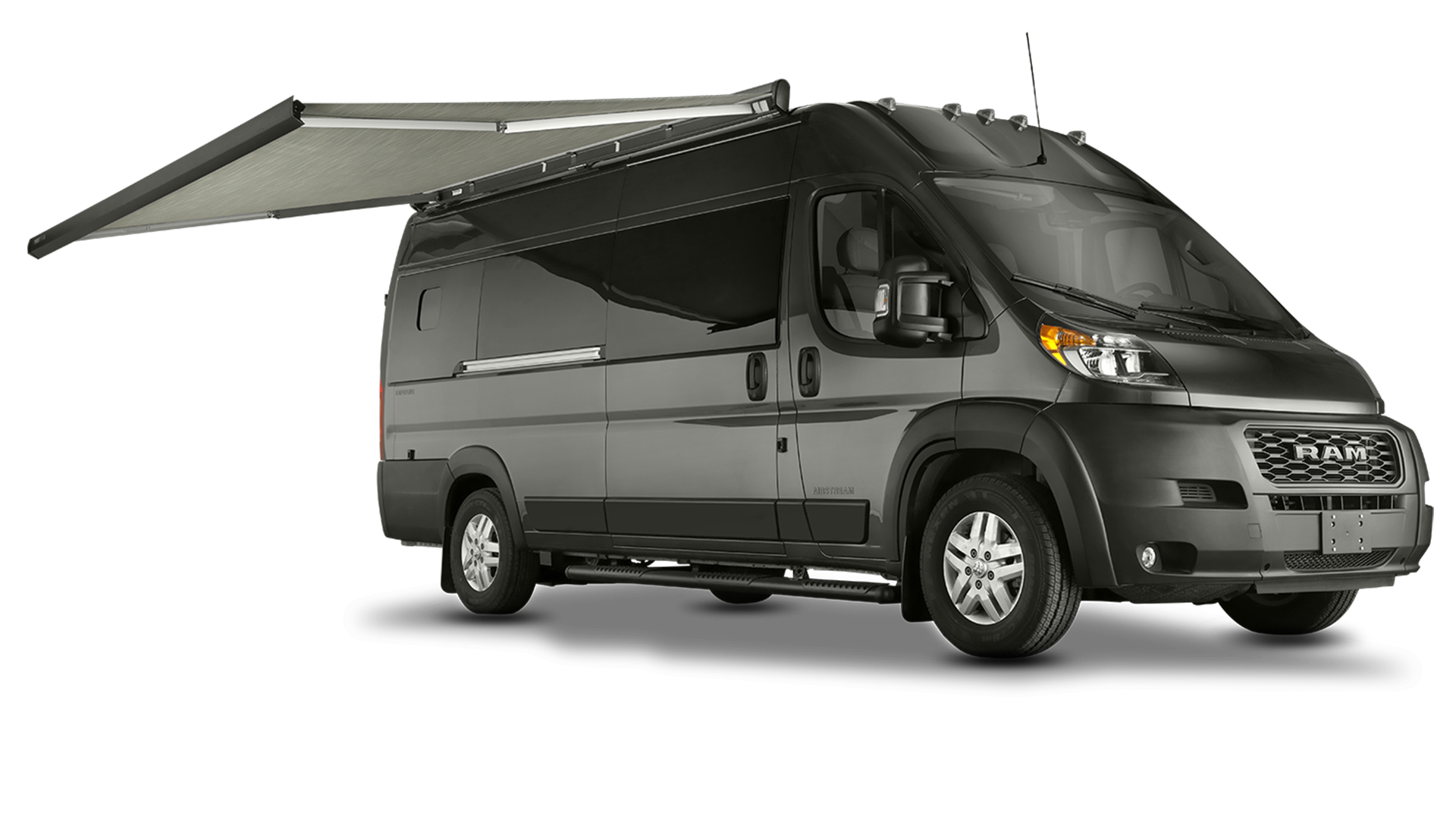
In many ways, you can think of these chassis as the shell of a delicious piece of gourmet chocolate. From the outside they resemble a standard Sprinter or ProMaster van, but inside they’re empty of components. It’s the Airstream manufacturing process that creates the delicious interior treat – the fruit filling, the nougat, or nutty caramel cluster – that fills that shell with the promise of travel adventure. The chassis provides the power, performance, and mobility. It’s the engine and drivetrain that powers the vehicle, the wheels and axles that allow it to move, and the shell that forms its waterproof housing.
But as soon as that chassis comes into our facility, work begins to transform it into a world-class recreational vehicle. The chassis is lifted so our pre-production teams can start work on the undercarriage, installing things like AirRide suspension, E1 Package components, and generators. Openings are cut into the walls for components like exhaust vents, electrical ports, and water hookups. The seats are removed and carted to our upholstery department where associates begin the painstaking process of upholstering with Ultraleather and other fine fabrics. And standard windows are replaced with RV windows.
Once this process is complete, the chassis is put through its first water check to ensure it’s leak-free before it begins moving down the line. From there, hand-built cabinetry, galleys, beds, seating, a shower, water heaters, air conditioners, and more are installed inside the vehicle. From start to finish, the Airstream touring coach begins its life as a vehicle shell. By the time it leaves the factory and heads off to a customer, it’s an Airstream.
Want to learn more about Airstream chassis? Have other questions about Airstream manufacturing and the various parts, materials, and effort that goes into building these iconic RVs? Check out Airstream Academy, where we’ve loaded answers to hundreds of FAQs about Airstream manufacturing, operation, and camping know-how.
Ready to see our manufacturing process firsthand? Start planning a trip to The Mothership where you can take one of our popular factory tours and step back through more than 90 years of company history at the Airstream Heritage Center.









